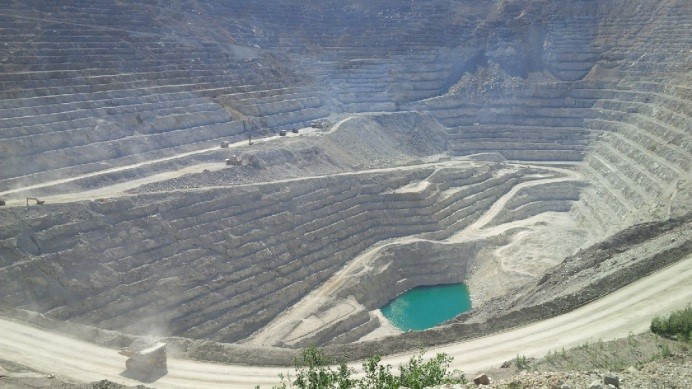Senator Murkowski E-Newsletter for June 18, 2015
Hello Alaskans,
It was great to be surrounded by so many of you when I was up in Alaska for the Memorial Day state work period. It’s vital for me to be on the ground, talking directly with Alaskans on issues that you’re thinking and worrying about, so I can see what we can do to best facilitate solutions back in Washington, D.C. I look forward to catching up with even more of you during the Independence Day state work period later this month.
Thank You to our Firefighters
(Click image to watch video.)
Memorial Day Weekend in the Mat-Su Valley


(I was honored to be a part of the Byer’s Lake Memorial Day ceremony once again. Year after year, it’s always a wonderful gathering that captures the solemnity and respect associated with Memorial Day.)


(Visiting with our honored veterans at the Palmer Veterans and Pioneer Home—the men and women there have stories and views that I wish everybody in Alaska could listen to. And a special thanks to the dedicated staff for all they do.)

(It was a tremendous privilege to participate in the Mat-Su Wall of Honor ceremony. As we commemorate the fallen and those who have served us, we must continue to honor their cause through our commitment to care for our veterans and their families by stepping up to provide for the needs of those who came back from the frontlines.)
Totem Ocean Trailer Express (TOTE) Ship
I toured a TOTE ship at the Port of Anchorage while crews were offloading cargo. Totem Ocean is moving forward with converting their Alaska fleet to run on LNG, a first in their industry to do so in our state. Upgrading their Alaska fleet to LNG will reduce carbon dioxide emissions by 35 percent.


Federal Roundtable on LNG Path Forward
In Anchorage, I hosted a roundtable discussion on the federal processes for permitting the Alaska liquefied natural gas (LNG) export project. Officials with the Department of Energy, the Federal Energy Regulatory Commission, and the Department of Interior participated. The purpose of this event was to bring agency folks up to the state for Alaskans to hear what is happening on the federal level when it comes to our natural gas, and this project in particular.
At the roundtable, the Department of Energy announced that they approved the LNG conditional license to export Alaska North Slope natural gas to non-free trade countries, most notably countries like Japan. This is the key LNG export license for Alaska’s massive natural gas project.
It’s encouraging that the federal government views this as a priority and agrees that exporting Alaska’s natural gas is in the national interest. This is a major milestone for the Alaska LNG project and very good news for our state.

Point Thomson
I toured the Point Thompson project, a large-scale gas cycling project that is being constructed on the North Slope. It will increase production to TAPS and is really the initial anchor of the AK LNG project. Point Thomson gas represents almost 25% of known gas resources on the North Slope. Over 1,200 Alaskans are directly engaged in working on this project, and it was great to see firsthand this investment in our future.


Fisher House
I visited the Fisher House and the Warrior Transition Unit on JBER (which just received its first occupant). These two facilities are providing lodging to service members and veterans receiving care at the 673rd Medical Group on JBER. So thankful from the support from the community for these services.


Fort Knox Gold Mine
Fort Knox Gold Mine employs more than 600 hard-working Alaskans and operates 24 hours a day. I was able to help deliver over 200 tons of rock in a CAT 793 Rock Truck—the second largest truck that Caterpillar, Inc. constructs!



Anchorage Chamber of Commerce Young Professionals Group
While I was up in Anchorage, I was able to visit with a group of bright, young Alaskans at the Anchorage Chamber of Commerce Young Professionals Group luncheon. I challenged the group to continue to be leaders in our community and gave them advice on how to be involved in public service.

Alaska’s Military Prominence Continues to Grow
I joined Senator Sullivan and Congressman Young in welcoming news from the Pentagon that Clear Air Force Station in Anderson has been proposed as the future site of the Missile Defense Agency’s long range discrimination radar system (LRDR).
Construction will begin pending an Environmental Impact Statement, and is expected to bring a total of $940 million worth of technology, hardware, and on-site construction to the area.
Housing this LRDR system at Clear Air Force Station gets us closer to the end goal of the best defense possible from the most strategic position in the world.
(Vice Admiral Syring, Director of the Missile Defense Agency, told me in an Appropriations Committee hearing that Alaska’s LRDR system is “critically important” to our nation’s defense—click image to watch.)
Alaska got more good news in terms of military investment in our state when the U.S. Army announced that Fort Wainwright is going to be the home base for nine “Gray Eagle” Unmanned Combat Air Vehicles.
The Gray Eagle Company will bring 128 military personnel and their families to Interior Alaska beginning next month, and represents a major addition of military hardware that complements Alaska’s two combat infantry brigades, the Apache helicopters and Air Force assets.
The Department of Defense’s investment of manpower and infrastructure solidifies the fact that Alaska is clearly the “most strategic location in the world.”
Supporting Alaska’s Military Past, Present and Future
Alaska’s military infrastructure and the men and women in uniform are our nation’s first line of defense when it comes to facing threats from our neighbors to the East - specifically Russia, North Korea and Iran. I worked with my colleagues on the Military Construction and Veterans Affairs Appropriations Subcommittee to include some key Alaska priorities in the 2016 spending bill. Alaska’s military in the Interior will see some new construction and investment: $79.2 has been appropriated for Alaskan military projects, including the F-35 simulator building and Central Heat and Power Plant at Eielson Air Force Base and a running track at Fort Greely.
Securing Funding for Alaska’s Infrastructure
Alaskans know that our ports, harbors, and roads are our state’s lifelines—they sustain our commerce and culture, and connect Alaskans to one another. Just recently the Senate Energy and Water Appropriations Subcommittee passed the appropriations bill for FY2016, which includes funding for studies, research, port projects, and energy innovations throughout our state. Click here to view a full list of the infrastructure projects in Alaska that are supported by this bill.
Icebreaker Prioritization
In order for the United States to step up to the plate and become a leader in the Arctic, we must invest in infrastructure, including the construction of polar icebreakers—for military, economic development, safety, and research purposes. I recently joined Senator Maria Cantwell (D-WA) to introduce the Icebreaker Recapitalization Act to authorize the U.S. Navy to construct up to six heavy icebreakers, which would be designed and operated by the Coast Guard.
Importance of the Arctic Council
If the U.S. is truly going to leverage our opportunities in the Arctic, we’ve got to be more aware of what it means to be an Arctic nation and demonstrate leadership and lead the conversation. I wrote an op-ed to educate Alaskans on what the Arctic Council is, and why it should matter to the United States. Click here to view the whole article.
Alaskans Feeling “Burned” by BLM
The Bureau of Land Management (BLM) has an over-sized presence in Alaska—1/4 of all BLM lands are located in our state. The agency is steadily and subtly withdrawing more and more land from Alaskans for potential development by proposing “Areas of Critical Environmental Concern.” Just recently, BLM proposed blocking nearly 700,000 acres from mining within Interior Alaska’s Fortymile District – despite the fact this would be in direct defiance of the “No More” clause in the Alaska National Interest Lands Conservation Act.
(ACECs make all other regulatory hurdles look like “chump change.” – Click to watch excerpt.)











